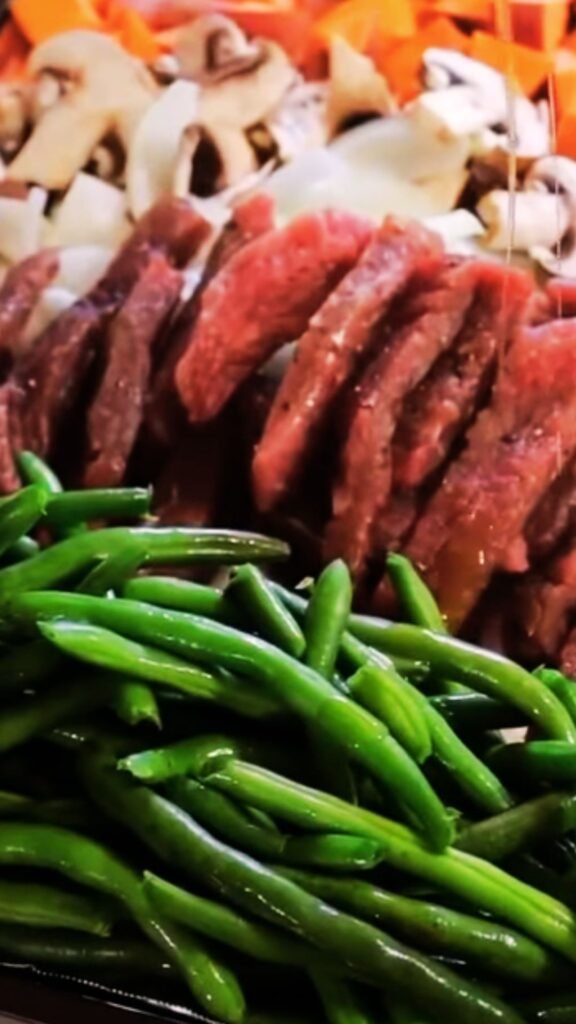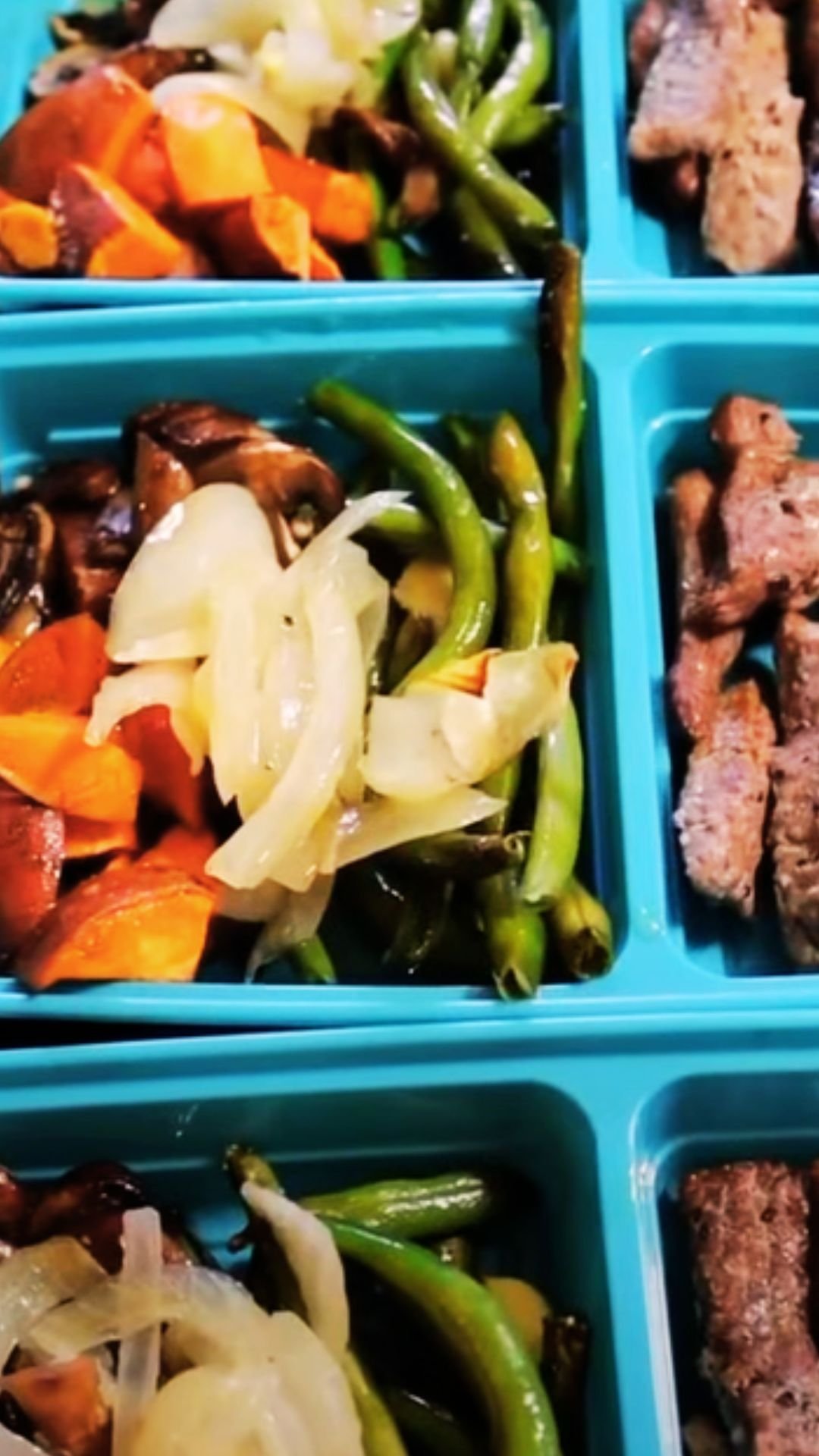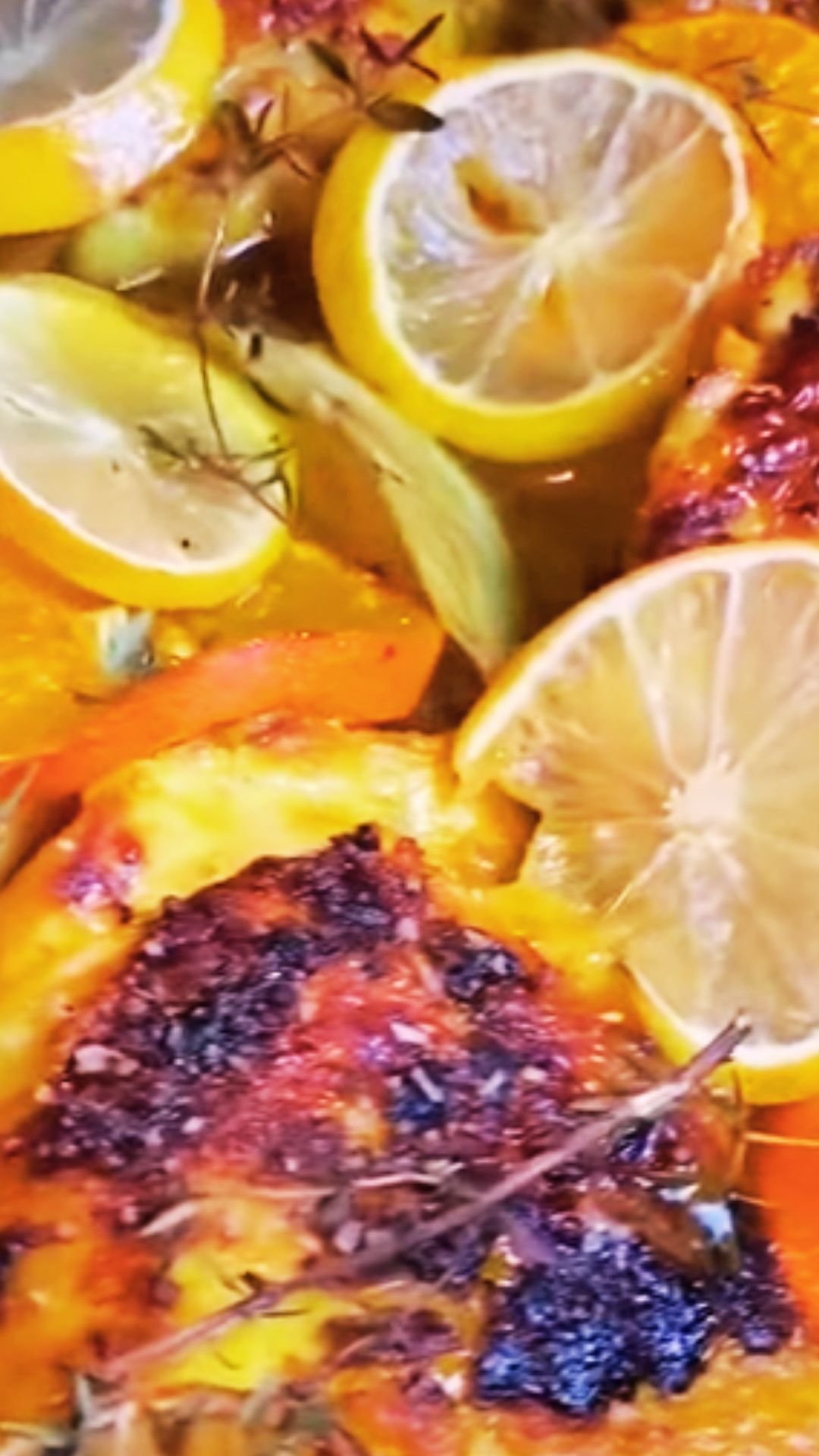When I first discovered sheet pan cooking, it completely transformed my weeknight dinner routine. Gone were the days of juggling multiple pots and pans, watching over different cooking times, and dealing with a mountain of dishes afterward. Sheet pan dinners became my secret weapon for creating nutritious, protein-packed meals that practically cook themselves while I tackle other evening tasks.
The beauty of one sheet pan dinners lies in their simplicity and efficiency. You arrange your protein, vegetables, and seasonings on a single baking sheet, pop it in the oven, and emerge 20-40 minutes later with a complete, balanced meal. For those of us committed to maintaining a healthy lifestyle while managing busy schedules, these recipes are nothing short of revolutionary.
What makes these dinners particularly appealing is their high protein content. Each recipe I’ve included provides at least 25 grams of protein per serving, supporting muscle maintenance, satiety, and overall health goals. Whether you’re an athlete, someone trying to lose weight, or simply wanting to eat more nutritiously, these meals deliver the protein your body craves without sacrificing flavor or convenience.
Understanding Sheet Pan Cooking
Sheet Pan Cooking: A method of preparing complete meals using a single rimmed baking sheet, where proteins and vegetables cook together in the oven at the same temperature and time.
High Protein Threshold: For this collection, I define high protein as containing 25+ grams of complete protein per serving, supporting daily nutritional needs.
One Pan Efficiency: The cooking technique that minimizes prep time, cooking vessels, and cleanup while maximizing nutrition and flavor.
Meal Prep Friendly: Dishes that can be prepared in advance, stored properly, and reheated while maintaining quality and nutritional value.
The science behind successful sheet pan cooking revolves around understanding how different ingredients respond to dry heat. Proteins like chicken, fish, and lean beef develop beautiful caramelization on the outside while remaining tender inside. Vegetables release their natural sugars, creating depth of flavor through the Maillard reaction. When I combine complementary ingredients with proper spacing and timing, magic happens on that single pan.
Essential Equipment and Preparation Tips
My kitchen arsenal for sheet pan success includes heavy-duty rimmed baking sheets, parchment paper or silicone mats, and reliable measuring tools. I’ve learned that investing in quality sheet pans makes a significant difference in even cooking and easy cleanup. Look for pans with low sides that allow proper air circulation.
Temperature control plays a crucial role in achieving perfectly cooked proteins and vegetables. I typically work within the 375°F to 450°F range, adjusting based on the protein type and vegetable density. Thicker proteins like chicken thighs can handle higher temperatures, while delicate fish requires gentler heat.
Timing coordination separates good sheet pan dinners from great ones. I’ve developed a system where I start proteins that need longer cooking times first, then add quicker-cooking vegetables in stages. Root vegetables like potatoes and carrots go on early, while tender vegetables like zucchini and bell peppers join the party later.
The 25 High Protein Sheet Pan Dinner Collection
Poultry-Based Dinners
1. Mediterranean Chicken and Vegetable Medley This vibrant dinner combines seasoned chicken thighs with colorful Mediterranean vegetables. I marinate the chicken in olive oil, lemon juice, oregano, and garlic for at least 30 minutes before roasting alongside cherry tomatoes, red onions, zucchini, and bell peppers. The result delivers 32 grams of protein per serving with bold, fresh flavors.
2. Honey Mustard Chicken with Sweet Potatoes Sweet and savory elements dance together in this comforting meal. I coat chicken breasts with a honey mustard glaze and pair them with cubed sweet potatoes and Brussels sprouts. The natural sweetness of the potatoes complements the tangy mustard, creating a balanced dish with 28 grams of protein.
3. Asian-Inspired Teriyaki Chicken Bowl My homemade teriyaki sauce elevates simple chicken thighs into something special. I serve them over roasted broccoli and snap peas, finishing with sesame seeds and green onions. This dinner provides 30 grams of protein while satisfying Asian food cravings.
4. Cajun Chicken and Sausage Jambalaya Style This sheet pan interpretation of classic jambalaya combines chicken pieces with turkey sausage, bell peppers, celery, and onions. I season everything with a homemade Cajun spice blend for authentic flavor. Each serving delivers 35 grams of protein with satisfying Southern comfort.
5. Lemon Herb Chicken with Asparagus Simple ingredients shine in this elegant preparation. I season chicken breasts with fresh herbs, lemon zest, and garlic, then roast them alongside asparagus spears and cherry tomatoes. The bright, clean flavors provide 29 grams of protein per serving.
6. Buffalo Chicken and Cauliflower For those who love heat, this dinner delivers spicy satisfaction. I toss chicken pieces in buffalo sauce and roast them with cauliflower florets and red onions. Greek yogurt provides a cooling element while boosting the protein content to 31 grams per serving.
Beef and Pork Options
7. Steak Fajita Sheet Pan Tender beef strips marinated in lime juice and spices cook alongside colorful bell peppers and onions. I serve this with whole grain tortillas and Greek yogurt for a complete meal providing 33 grams of protein.
8. Italian Sausage and Pepper Medley High-quality Italian turkey sausages pair beautifully with rainbow bell peppers, onions, and zucchini. I season everything with Italian herbs and finish with fresh basil. This dinner offers 28 grams of protein with authentic Italian flavors.
9. Pork Tenderloin with Root Vegetables Lean pork tenderloin seasoned with rosemary and thyme roasts alongside carrots, parsnips, and potatoes. The tender meat and caramelized vegetables create a hearty meal with 30 grams of protein per serving.
10. Asian Beef and Broccoli My sheet pan version of the takeout favorite uses lean beef strips with fresh broccoli and snap peas. A simple soy-ginger glaze brings everything together, delivering 32 grams of protein without the excess sodium of restaurant versions.
11. Mediterranean Pork and Vegetable Bake Pork chops seasoned with Mediterranean herbs cook alongside eggplant, zucchini, and tomatoes. I finish with crumbled feta cheese for added protein and flavor, bringing the total to 29 grams per serving.
Seafood Selections
12. Salmon and Asparagus with Lemon Dill Fresh salmon fillets pair naturally with tender asparagus spears. I season both with lemon zest, dill, and garlic for a light yet satisfying meal providing 34 grams of protein.
13. Cod and Mediterranean Vegetables Flaky cod fillets rest atop a bed of cherry tomatoes, olives, and red onions. The gentle cooking method preserves the fish’s delicate texture while infusing it with Mediterranean flavors. Each serving contains 27 grams of protein.
14. Shrimp and Sausage Cajun Boil This sheet pan interpretation of a traditional boil combines large shrimp with turkey sausage, corn, and potatoes. Cajun seasonings bring authentic Louisiana flavors with 30 grams of protein per serving.
15. Teriyaki Salmon with Asian Vegetables Glazed salmon fillets cook alongside bok choy, mushrooms, and bell peppers. The umami-rich teriyaki sauce creates restaurant-quality flavors at home, delivering 32 grams of protein.
16. Lemon Garlic Shrimp and Zucchini Quick-cooking shrimp pair perfectly with zucchini noodles and cherry tomatoes. This light dinner comes together in just 15 minutes while providing 26 grams of protein.

Plant-Based Protein Powerhouses
17. Tofu and Vegetable Stir-Fry Style Extra-firm tofu cubes marinated in soy sauce and sesame oil roast alongside broccoli, bell peppers, and snap peas. This vegan option delivers 25 grams of plant-based protein.
18. Chickpea and Sweet Potato Curry Roasted chickpeas and sweet potato cubes seasoned with curry spices create a warming, satisfying meal. I finish with fresh cilantro and a dollop of Greek yogurt for 27 grams of protein.
19. Tempeh and Brussels Sprouts Marinated tempeh strips cook alongside halved Brussels sprouts and red onions. The nutty flavor of tempeh complements the slightly bitter sprouts perfectly, providing 28 grams of protein.
20. Lentil and Vegetable Medley Pre-cooked lentils combine with roasted vegetables and feta cheese for a Mediterranean-inspired meal. This hearty dinner offers 26 grams of protein with plenty of fiber.
Combination Plates
21. Surf and Turf Sheet Pan Small portions of both steak and shrimp create an indulgent yet healthy dinner. I pair them with asparagus and mushrooms for a restaurant-quality meal providing 35 grams of protein.
22. Chicken and Chickpea Power Bowl Combining animal and plant proteins, this dinner features chicken thighs with roasted chickpeas and vegetables. The dual protein sources deliver an impressive 33 grams per serving.
23. Turkey and Sweet Potato Hash Ground turkey browns beautifully on the sheet pan alongside diced sweet potatoes and bell peppers. I finish with fresh herbs and a fried egg for 31 grams of protein.
24. Salmon and White Bean Salad Flaked salmon over warm white beans with roasted vegetables creates a sophisticated meal. The combination provides 29 grams of protein with heart-healthy omega-3 fatty acids.
25. Egg and Vegetable Breakfast for Dinner Sometimes breakfast makes the perfect dinner. I create wells in roasted vegetables for eggs to cook in, resulting in a nutritious meal with 25 grams of protein.
Nutritional Analysis and Benefits
| Recipe Category | Average Protein (g) | Average Calories | Average Prep Time | Average Cook Time |
|---|---|---|---|---|
| Poultry-Based | 30 | 420 | 15 minutes | 25 minutes |
| Beef/Pork | 31 | 450 | 20 minutes | 30 minutes |
| Seafood | 29 | 380 | 12 minutes | 18 minutes |
| Plant-Based | 26 | 350 | 18 minutes | 22 minutes |
| Combination | 32 | 440 | 22 minutes | 28 minutes |
The nutritional profile of these meals extends far beyond just protein content. Each dinner provides essential vitamins, minerals, and antioxidants from the variety of vegetables included. The cooking method preserves nutrients better than boiling or steaming, as vegetables maintain their structure and don’t lose water-soluble vitamins.
Protein quality varies among sources, but I’ve ensured each recipe contains complete proteins or complementary combinations. Animal proteins naturally provide all essential amino acids, while plant-based options are carefully paired to create complete amino acid profiles.
Meal Prep and Storage Strategies
| Storage Method | Refrigerator Life | Freezer Life | Reheating Instructions | Best Recipes |
|---|---|---|---|---|
| Whole Portions | 3-4 days | 2-3 months | 350°F for 10-15 min | All chicken, beef |
| Component Separated | 4-5 days | 3-4 months | Microwave 2-3 min | Seafood, vegetables |
| Individual Containers | 4-5 days | 2-3 months | Microwave 2-4 min | All recipes |
| Freezer Bags | Not recommended | 3-4 months | Thaw overnight, reheat | Cooked proteins only |
My approach to meal prep with sheet pan dinners involves batch cooking on weekends. I prepare 2-3 different recipes, portion them into containers, and have healthy meals ready for the entire week. The key is choosing recipes with vegetables that reheat well and proteins that maintain their texture after storage.
For optimal results, I slightly undercook vegetables during the initial preparation, knowing they’ll finish cooking during reheating. This prevents mushy textures that can ruin an otherwise perfect meal.
Customization and Dietary Adaptations
| Dietary Need | Protein Modifications | Vegetable Swaps | Seasoning Adjustments |
|---|---|---|---|
| Keto-Friendly | Keep proteins same | Replace starchy veg with leafy greens | Add more fats |
| Paleo | Remove dairy proteins | Use compliant vegetables only | Eliminate processed seasonings |
| Low-Sodium | Choose fresh proteins | Focus on herbs vs. salt | Use citrus and vinegar |
| Gluten-Free | Avoid breaded proteins | All vegetables naturally GF | Check seasoning labels |
| Dairy-Free | Remove cheese additions | Keep vegetable base same | Use dairy-free alternatives |
The versatility of sheet pan cooking allows for endless customization based on dietary preferences and restrictions. I regularly adapt these recipes for different family members’ needs, swapping ingredients while maintaining the core cooking method and nutritional goals.
Seasonal modifications keep these dinners interesting year-round. Summer versions feature lighter proteins like fish with zucchini and tomatoes, while winter adaptations embrace heartier proteins with root vegetables and warming spices.
Cooking Techniques and Troubleshooting
Temperature accuracy determines success in sheet pan cooking. I always preheat my oven fully and use an oven thermometer to verify temperature. Protein safety requires internal temperatures of 165°F for poultry, 145°F for fish, and 160°F for ground meats.
Spacing ingredients properly prevents steaming and promotes browning. I ensure pieces don’t touch and use multiple pans when necessary. Overcrowding leads to uneven cooking and soggy vegetables.
Oil distribution makes the difference between perfectly roasted and burnt food. I toss everything in measured amounts of oil, ensuring even coating without excess that can cause smoking.
Serving Suggestions and Accompaniments
These complete meals rarely need additional sides, but I sometimes add:
- Fresh herb garnishes for color and flavor
- Lemon wedges for brightness
- Hot sauce or condiments for customization
- Whole grain rolls for extra carbohydrates
- Simple green salads for additional vegetables
The beauty of sheet pan dinners lies in their completeness. Each recipe provides balanced nutrition without requiring additional preparation, making weeknight cooking manageable even on the busiest days.
Cost Analysis and Budget-Friendly Tips
| Price Range | Recipe Examples | Money-Saving Tips | Bulk Buying Benefits |
|---|---|---|---|
| Budget ($8-12/4 servings) | Chicken thighs, ground turkey | Buy family packs | Freeze extra portions |
| Mid-Range ($12-18/4 servings) | Pork tenderloin, salmon | Shop sales cycles | Stock up on favorites |
| Premium ($18-25/4 servings) | Steak, large shrimp | Use as occasional treats | Quality over quantity |
I’ve found that sheet pan dinners often cost less per serving than restaurant meals while providing superior nutrition. Buying proteins in bulk when on sale and freezing individual portions reduces costs significantly.
Seasonal vegetable selection keeps prices reasonable while ensuring peak flavor. I plan recipes around what’s abundant and affordable at local markets.
Frequently Asked Questions
Q: Can I prepare these meals completely in advance?
I recommend preparing components separately for best results. Proteins can be seasoned and stored, vegetables can be chopped, but I avoid combining everything until ready to cook. This prevents vegetables from becoming soggy and proteins from over-marinating.
Q: What’s the best way to prevent vegetables from burning while ensuring proteins cook through?
Timing is crucial. I start longer-cooking proteins first, then add vegetables based on their cooking requirements. Dense vegetables like potatoes need the full cooking time, while tender ones like zucchini should be added halfway through.
Q: How do I adapt these recipes for larger families?
Most recipes scale easily by using multiple sheet pans. I maintain the same temperature and timing while increasing ingredient quantities proportionally. Avoid overcrowding single pans, as this leads to steaming rather than roasting.
Q: Can frozen vegetables work in sheet pan dinners?
Some frozen vegetables work well, particularly Brussels sprouts, broccoli, and cauliflower. I avoid defrosting them first, as this creates excess moisture. Frozen vegetables may need slightly longer cooking times.
Q: What proteins work best for meal prep versions?
Chicken thighs, pork tenderloin, and firm fish like salmon reheat beautifully. I avoid delicate proteins like sole or proteins that dry out easily when reheated.
Q: How do I prevent my sheet pans from warping in high heat?
Heavy-duty, commercial-grade sheet pans resist warping better than thin ones. I also avoid extreme temperature changes, like putting hot pans directly into cold water.
Q: Can I use these recipes in convection ovens?
Absolutely! Reduce the temperature by 25°F and check for doneness 5-10 minutes earlier than stated times. Convection cooking promotes even browning and can improve results.
Q: What’s the minimum protein content I should aim for in a meal?
For active adults, 25-30 grams per meal supports muscle maintenance and satiety. These recipes all meet or exceed this threshold while providing complete nutrition.
Q: How do I know when proteins are perfectly cooked?
I rely on internal temperature rather than timing alone. Digital instant-read thermometers take the guesswork out of protein cooking and ensure food safety.
Q: Can I double recipes for entertaining?
Yes, but use multiple sheet pans rather than overcrowding. I stagger cooking times by 5-10 minutes to manage oven space efficiently.
Sheet pan dinners have revolutionized my approach to weeknight cooking, and I’m confident they’ll do the same for you. These 25 high-protein recipes provide the foundation for months of varied, nutritious meals that practically cook themselves. The combination of convenience, nutrition, and flavor makes them indispensable tools for anyone committed to healthy eating without sacrificing time or taste.
The journey toward better nutrition doesn’t require complicated techniques or extensive ingredient lists. Sometimes the simplest approaches yield the most satisfying results, and sheet pan cooking exemplifies this perfectly. Each recipe in this collection represents a complete meal solution that supports your health goals while respecting your busy schedule.
Start with one or two recipes that appeal to your taste preferences, then gradually expand your repertoire. Before long, you’ll develop your own variations and combinations, making sheet pan cooking a natural part of your weekly routine. The investment in quality ingredients and proper technique pays dividends in both nutrition and satisfaction, meal after meal.


